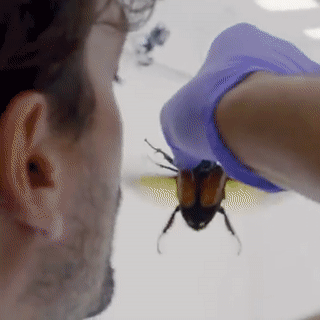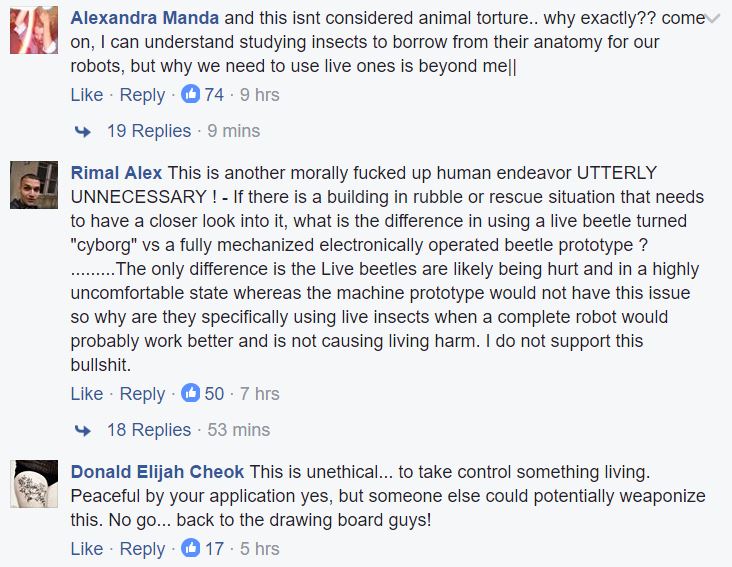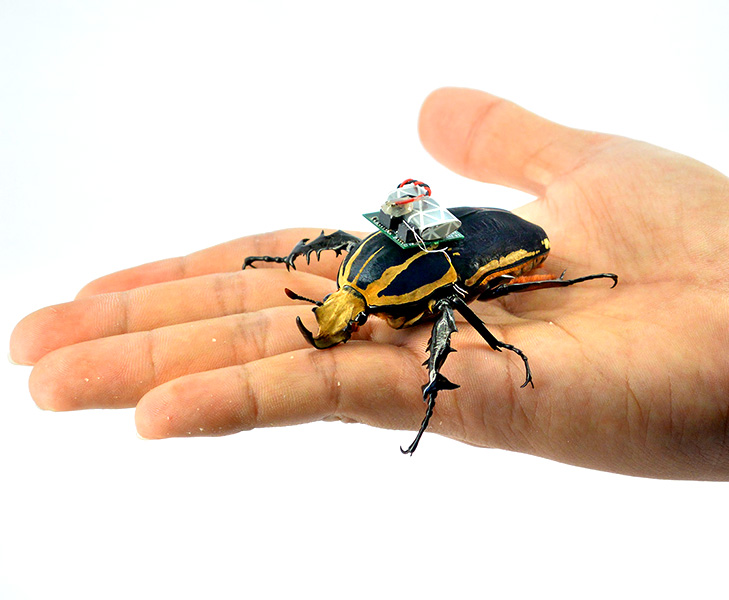In early 2015, the Nanyang Technological University (NTU) announced that it broke new ground "in the future of remote-controlled drone technology".
NTU, partnering with University of California (UC) Berkeley, developed a "living machine whose flight can be wirelessly controlled with minimal human intervention."
The living machine being beetles.
An electronic backpack with a built-in wireless receiver and transmitter is mounted atop the beetle and converts radio signals received remotely into a variety of actions in the beetle -- such as making the beetle fly left or right, or hover.
The project is led by Assistant Professor Hirotaka Sato from the NTU School of Mechanical and Aerospace Engineering explains how this technology can be used:
"This technology could prove to be an improved alternative to remote-controlled drones as it could go into areas which are not accessible before. For example, it could be used in search-and-rescue missions as it could go into small nooks and crevices in a collapsed building to locate injured survivors."
Controlled flight
In the gif below, you can see a beetle being let loose before being compelled to fly towards the right and hitting the cloth barrier:

Check out the video by Motherboard to see the cyborg beetle in action:
Reaction to the Motherboard video was largely negative with many people saying it was cruelty against the insects and unneccesary exploitation of living creatures.

The video, however, did not detail how the backpack interacted with the beetle.
In NTU's 2015 announcement, it said, "The microchip is strapped onto the beetle using organic beeswax, which is harmless to the beetle’s carapace and could be easily removed. Six electrodes from the microprocessor are connected to the beetle’s optic lobes and flight muscles. Signals received wirelessly influence the insect to take off, turn left or right, or even hover in mid-flight."
The announcement goes on to say that the "detachable high-tech backpack is harmless to the beetle. The giant insect goes on to live normally and fulfils its regular, adult lifespan which is about five to six months."
Why not use robots/drones?
Many comments also questioned why, with today's advances in drone technology, should beetles be used in the first place.
According to NTU, the materials used to build the high-tech backpack "cost less than S$10, and the electronics are easy to build with mostly off-the-shelf components."
Drones on the other hands are priced in the hundreds and thousands. Conventional drones today are also unable to switch between flight and crawling into enclosed spaces like beetles do.
Top image from NTU
If you like what you read, follow us on Facebook and Twitter to get the latest updates.
If you like what you read, follow us on Facebook, Instagram, Twitter and Telegram to get the latest updates.
